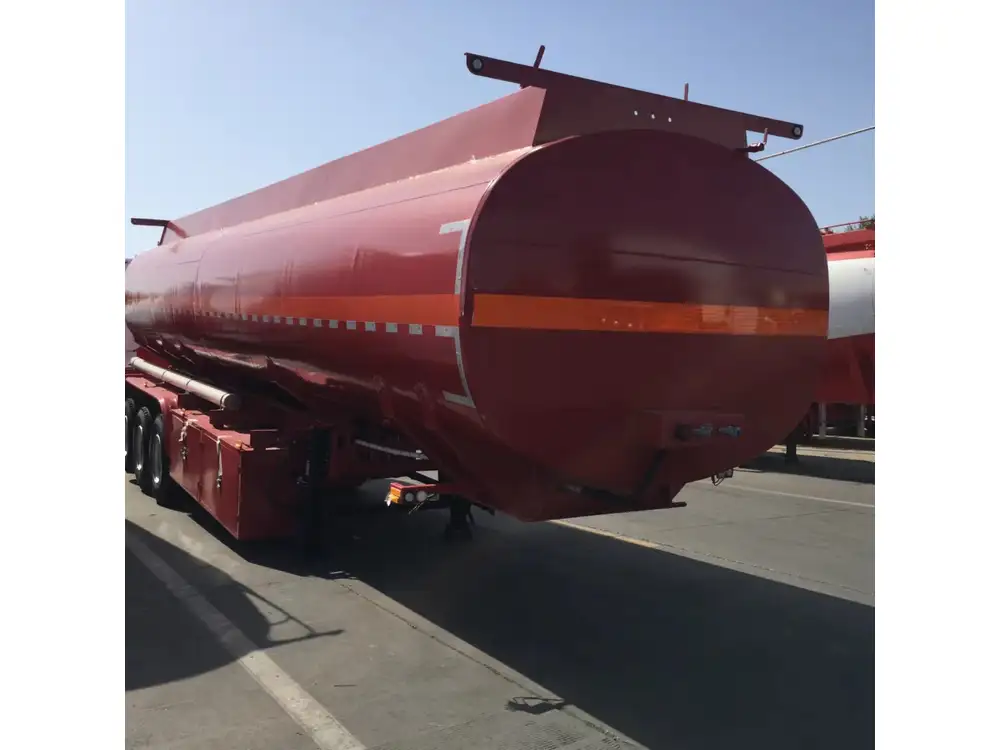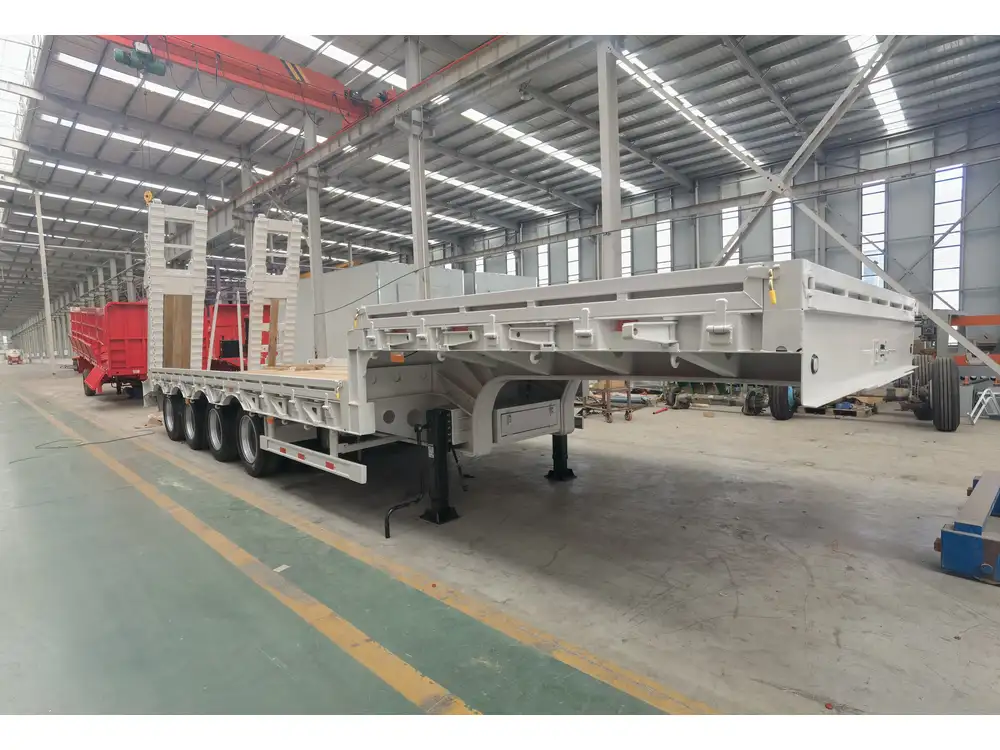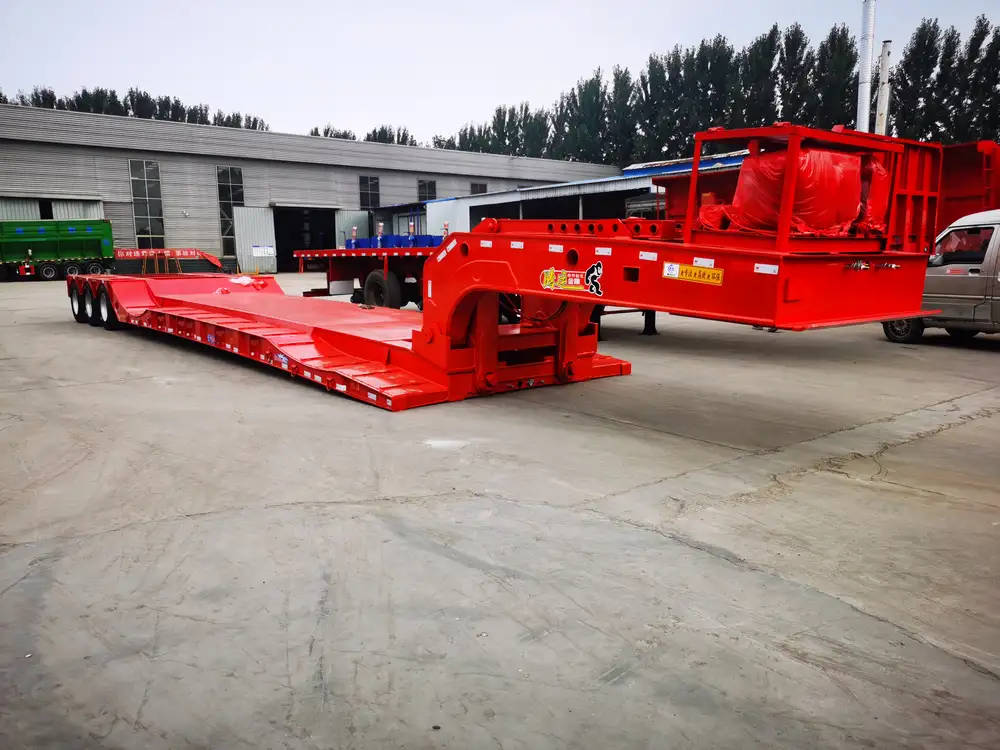When traversing the expansive road networks in the United States, the dimension of semi truck trailers often arises as a crucial factor influencing transportation logistics, shipment capabilities, and regulatory compliance. Understanding the standard lengths, allowable variations, and implications for businesses can foster informed decision-making. This comprehensive guide delves into the nitty-gritty of semi truck trailer lengths, regulations, and considerations for manufacturers, drivers, and logistics companies.
Standard Semi Truck Trailer Lengths
In the vast landscape of American roadways, the typical lengths for semi truck trailers are primarily guided by federal regulations. The Federal Highway Administration (FHWA) has established basic industry standards, though individual states can impose their own regulations that may allow for variations. Here’s an overview of common trailer lengths:
| Type of Trailer | Standard Length |
|---|---|
| Dry Van Trailers | 48 to 53 feet |
| Refrigerated Trailers (Reefers) | 48 to 53 feet |
| Flatbed Trailers | 48 to 53 feet |
| Specialty Trailers (e.g., lowboy) | Varies, typically up to 53 feet |
| Tank Trailers | 48 to 53 feet |
| Auto Transport Trailers | 48 to 53 feet |
The most prevalent configuration is the 53-foot trailer, which has become a standard in the industry due to its optimal balance of capacity and maneuverability. These dimensions are critical for ensuring compliance with both federal and state height and weight restrictions, which also play a role in determining permissible loads.
Variations by State: Regulations and Compliance
While interstate standards provide a framework, each state possesses the authority to legislate its unique guidelines related to semi truck trailer lengths. Some states may permit longer trucks or specialized equipment, while others adhere strictly to the federal guidelines. Below are notable examples:
| State | Maximum Length Allowed | Notes |
|---|---|---|
| California | 40 to 53 feet | Some specific allowances for specialty trailers. |
| Texas | 65 feet (overall vehicle) | Flexible configurations including double trailers. |
| Florida | 53 feet | Follows federal standards; includes specific logistics routes. |
| New York | 53 feet | Subject to specific bridge formula for weight restrictions. |
| Alaska | 53 feet | Special provisions for seasonal weight restrictions. |
It’s imperative for transportation companies to familiarize themselves with the regulations of each state within which they operate. Non-compliance can lead to hefty fines, equipment impounding, and consequential delays.

Practical Implications of Trailer Length
A trailer’s length isn’t just a regulatory matter—it profoundly influences the broader operational dynamics of transportation. Below are key implications to consider:
1. Loading Capacity
Longer trailers, such as the prevalent 53-foot models, offer increased hauling capacity. For logistics managers, this translates to:
- Fewer trips for the same volume of goods, resulting in reduced fuel consumption and labor costs.
- Increased revenue potential through maximized load efficiency.
2. Maneuverability
Conversely, length poses challenges with regard to turning radius and maneuverability:
- Longer trailers require more space to navigate tight spaces, impacting urban deliveries where streets may be narrower or have less maneuverable intersections.
- In certain applications, businesses may opt for shorter trailers for ease in urban environments, trading off some loading capacity for agility.

3. Fuel Efficiency
The correlation between trailer length and fuel efficiency emerges as an area of crucial discussion:
- While longer trailers can improve fuel economy per ton of freight due to higher load capacity, they also pose potential aerodynamic challenges, especially when paired with trucks that are not optimized for longer lengths.
- Fleet management can employ various strategies to optimize configurations, including the selection of appropriate tractor models designed for long-haul operations.
4. Cost Implications
Adapting to longer trailers is a strategic choice that impacts financial planning. Key components include:
- Increased acquisition costs for specialized trailers designed for efficiency.
- Potential savings on operating costs due to fewer trips and lower fuel expenditures.
- Balancing the initial investment against long-term operational efficiencies.
Designing the Right Trailer for Your Needs
In evaluating the types of semi truck trailers, it’s essential to consider specific needs based on cargo types, regional regulations, and business constraints. A breakdown of common trailer types illustrates the diversity available:

Dry Van Trailers
These enclosed trailers protect cargo from the elements, making them ideal for consumer goods, electronics, and most non-perishable items. Available in standard lengths of 48 to 53 feet, they also provide versatility in load configurations.
Refrigerated Trailers (Reefers)
Designed for perishable goods, reefers maintain temperature-sensitive environments. Their dimensions mirror standard dry vans but allow for specialized equipment that ensures the integrity of fragile freight.
Flatbed Trailers
Flatbeds provide flexibility in loading and unloading; they do not have sides, allowing for oversized cargo, machinery, and building materials. While typically 48 to 53 feet long, they require distinct securing mechanisms for safety, along with compliance checks for weight distribution.

Tank Trailers
Common for hauling liquids, tank trailers often range from 48 to 53 feet. Understanding the regulations around hazardous materials is crucial for compliance and safety.
Auto Transport Trailers
Specialized for transporting vehicles, these trailers can vary based on configuration (double-decker, single-deck) while adhering to length regulations while maximizing transporting capabilities.
The Future of Semi Truck Trailers
As transport technology continues to evolve, so too do the configurations and lengths of trailers. Emerging trends that warrant attention include:

1. Telematics and Data Analytics
The integration of tracking technologies and data analytics is reshaping how businesses manage logistics. By analyzing usage patterns and optimizing load configurations based on data, companies can enhance fleet utilization efficiency.
2. Sustainability Initiatives
Pressure for eco-friendly practices is prompting companies to consider more sustainable trailer designs. Innovations in materials and aerodynamics are influencing specifications, aiming to reduce carbon footprints associated with long-haul transportation.
3. Regulatory Changes
With evolving freight demands, state and federal regulations regarding trailer lengths may adjust to meet industry trends better. Staying ahead of regulatory changes enables logistics firms to maintain compliance and optimize operations effectively.

Conclusion
Understanding the lengths of semi truck trailers in the US is not merely an academic inquiry; it influences vital operational decisions that directly impact profitability, compliance, and efficiency. By familiarizing oneself with standard lengths, variations across state regulations, and practical implications, businesses can strategically approach their logistical challenges. In the ever-evolving landscape of transportation, harnessing knowledge about trailer specifications can lead to better decision-making and ultimately drive an organization’s success in a competitive market.
Whether choosing the right trailer for urban deliveries or maximizing the use of 53-foot models for long-haul freight, upholding an informed perspective positions companies to thrive within the intricate tapestry of American transportation logistics.



